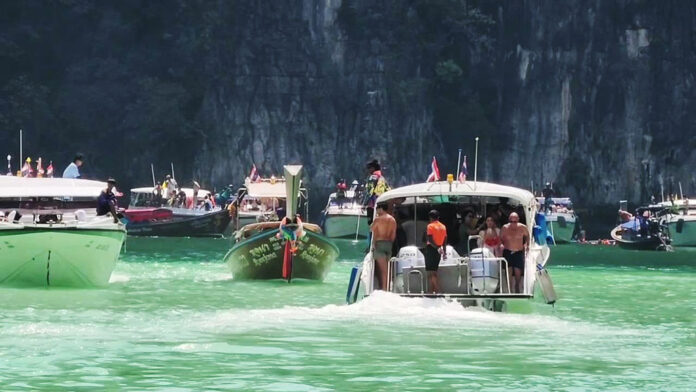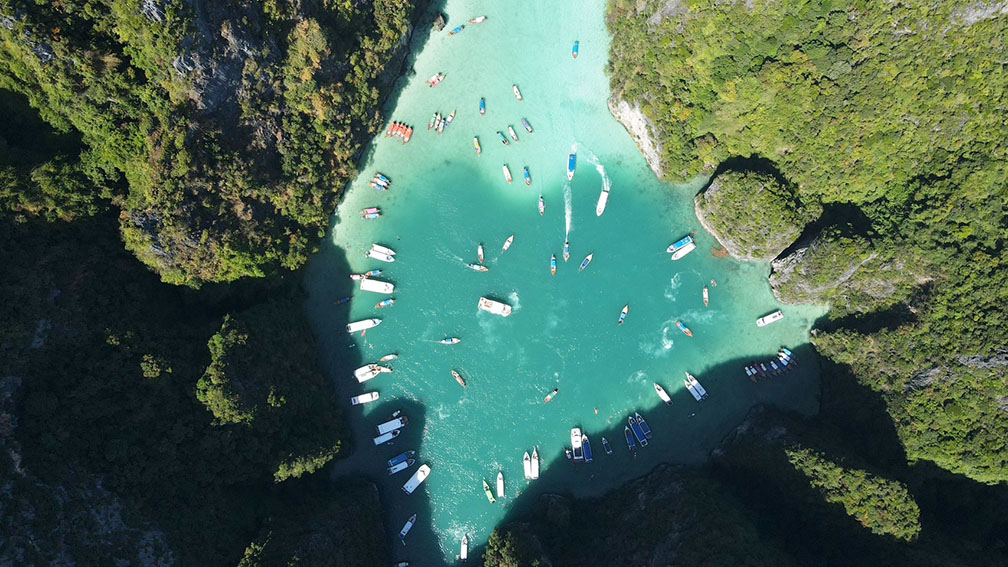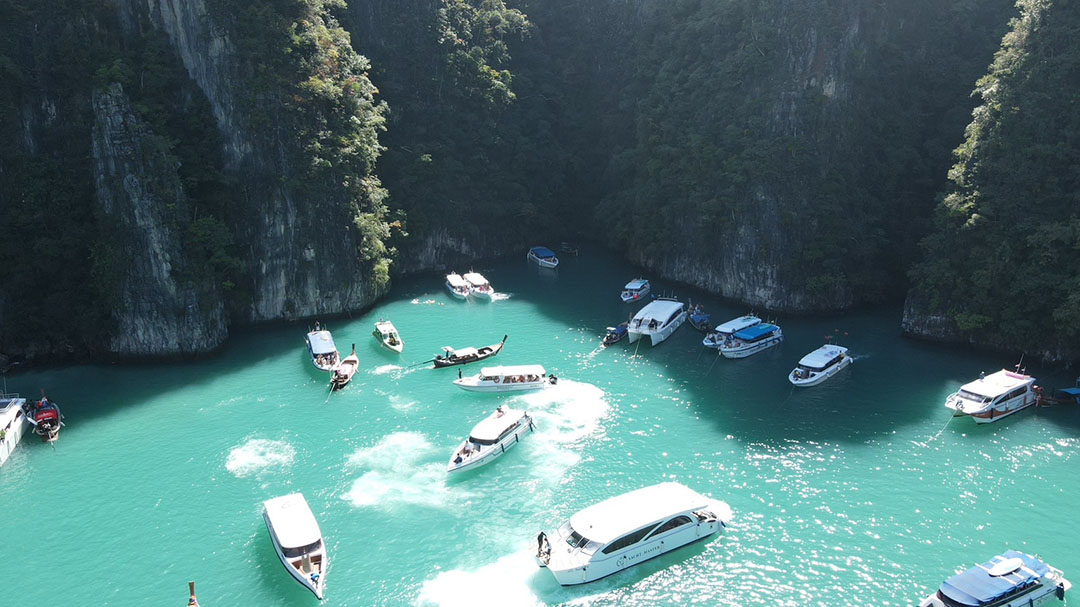
KRABI – Thailand’s top tourist destination, the Phi Phi Islands, is beginning to feel the negative effects of mass tourism, including environmental damage and safety risks for tourists. This has prompted the authorities to take urgent action to improve the situation.
A recent survey conducted by the Noppharat Thara Beach-Mu Ko Phi Phi National Park authorities in cooperation with other relevant authorities has revealed that the popular tourist destination Pi Leh Bay, the second most popular bay after Maya Bay in Ao Nang, Mueang district, Krabi province, is affected by heavy boat traffic.
On average, around 120 boats, including long tail boats and speedboats, enter the bay every day. This has led to air pollution from boat exhaust fumes, noise pollution and an increased risk of boating accidents.

It can also be difficult for tourists to enjoy the landscape due to the crowds. Some even venture outside the designated bathing area to escape the crowds, putting themselves in danger.
Yuthapong Damsrisuk, chief of Noppharat Thara Beach-Mu Ko Phi Phi National Park, said that a meeting of all relevant parties on February 5, 2024, resulted in the following initial measures to regulate tourism in Pi Leh Lagoon: Reducing the number of empty longtail boats entering the bay.
These boats are no longer allowed to park in Pi Leh Laggon or transfer tourists from speedboats to longtail boats. Designation of certain swimming areas in Pi Le Bay, where tourists are only allowed to swim in designated areas.

All boats entering the bay and offering tourist services must be licensed by the Department of National Parks. Boat operators must also undergo training in tourist services, basic first aid and other areas that help improve tourism while protecting the environment.
These measures were supported by the longtail boat operators, the companies on Phi Phi Island and the companies in Phuket Province associated with tourism on the Phi Phi Islands.
The next step is to present the feedback at the National Park Advisory Committee (PAC) meeting on 20 February to obtain approval for the implementation of the guidelines and regulations for entering Pi Le Lagoon.
____
Related article:
Phi Phi Islands’ Drive to Balance Tourism, Environmental Conservation















































